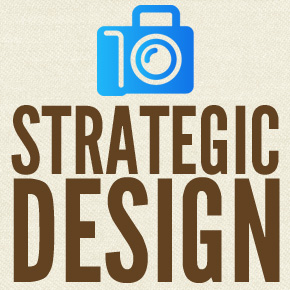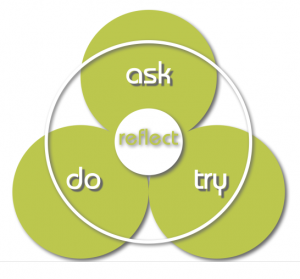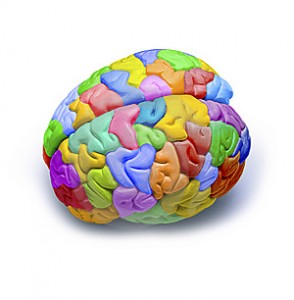Comm 388 Final Reflection: Top Takeaways from d.studio
After 10 wonderful Wednesday afternoons spent in that kindergarten-looking classroom on the 3rd floor in Henry Angus, here are my reflections on what I learned in the d.studio.
Strategic Design: I think I finally get what it means! 
If I could sum up the essence of this course in 2 words, it would be “strategic design”. Strategic Design was at the core of everything that we did – in class discussion, assignments, group projects. Despite this term being tossed around about 5 times a class, I had no idea what it actually meant for the longest time. According to the course outline, Strategic Design is “a collaborative process for tackling complex problems”. Little did I know that this was the nice succinct definition for a highly intricate concept that turned out to a beast of a technique in practice. As Brian Boyer from the Helsinki Design Lab described in his publication In Studio: Recipes for Systemic Change, the strategic design process combines the use of both analytic and creative thinking methods and involves collaboration between the right people to provide innovative solutions to carefully defined problems. In the early weeks of this course I would have asked “Well doesn’t everyone already utilize this process in business?” To me, strategic design seemed like an intuitively ideal technique. After our first group project working with TypeCAST and using the Business Canvas, I realized that there were 2 main barriers that prevented people from naturally employing strategic design. 1) Many of us are naturally stronger right brain or left brain thinkers. It takes a great deal of consciousness to engage both sides of our brain equally in problem solving. 2) Any type of decision is usually made by like-minded people with the same goal (same department, same discipline, same circumstances, etc.). D.studio provided us the safe, risk-free space to practice the strategic design process ASK.TRY.DO. For me, this framework eliminated the two barriers described above. It brought “strategic design” from an intuitive ideal concept to a real, tangible, structured technique.
ASK.TRY.DO – Do you see the moon-walking bear?
- This video sums up my experience in the ASK phase.
What I learned in this stage is that it’s hard to see what you’re not looking for. I recall the in-class observation exercise for which we were asked to observe a room in Sauder for about 20 minutes. What this activity allowed us to do was observe objectively, without much purpose. I found answering the 6 Universal Questions really helpful in obtaining concrete information about an environment.
- The TRY phase was my favourite because it was so hands on. This is the phase that we prototyped!
What I learned from this stage was that failing is a good thing! In business school and in the workplace we are discouraged from achieving negative results. But if we don’t fail, how are we supposed to realize our mistakes and improve on them? During our in-class prototyping activity, we utilized the technique of “scenarios”. We imagined different scenarios in which our product could be used, and it allowed us to broaden the function of our prototype. Overall, prototyping allowed us to fail big with low cost, and sift through our ideas to identity the feasible ones and non-feasible ones.
- Finally, the most vivid experience with the DO phase was during our 2nd project – the focus group.
As part of our Climate Smart Project with Met Fine Printers, we held a focus group that sought to understand the perceptions companies had of the printing industry in terms of sustainability. The technique that was very beneficial to us was story telling. It prevented us from asking leading questions and allowed us to engage in an authentic, unbiased conversation. This spoke volumes to the power of the strategic design process to bring people together to share ideas, as well as its importance for proper problem identification. We realized that the problem we had identified wasn’t actually a problem at all! This confirmed the significance of a user-driven focus during the DO stage.
CREATIVITY – it isn’t rocket science
One of the more personal takeaways from this class would be that one doesn’t have to invent a rocket ship to be creative. I usually associate creativity with art – to create something, to build something, to invent something. What I learned through discussion in class was that I am creative every single day! From choosing my outfit in the morning to making my lunch, to choosing my route to class, creativity doesn’t have to be grand and glamorous. As Roberto Verganti describes in his letter Design-Driven Innovation, “designers are people before being designers”. He recognizes that people inherently possess the ability and desire to employ the 2 distinct perspectives of designers: style and function. Realizing this has allowed me to embrace the creative decisions I make every day and encourages me to continue to make decisions more creatively, no matter how big or small.
Co-creation – a double-edged sword
If strategic design was to have a double edged sword, I think it would be the co-creation aspect. It is the distinguishing feature of the process in that it brings together people from different areas to contribute their unique ways of thinking. While encouraging multi-disciplinary brainstorming and idea-sharing, the flip side of co-creation is the difficulty in managing conflicting interests. Brian Boyer talked about this exact issue in his speech re-Deisgn for social innovation put on by ISIS in early November at UBC Robson Square. He described the difficulty that the Helsinki Design Lab continuously has in bridging the gap between government, corporations, and society. How do you create harmony between the desire for profits, social equality, and environmental sustainability given the constraints of governmental policy and resistance to change? How do you practice strategic design in a timely manner? (I can vouch that the process can take a very very very very long time). In his scenario with the HDL, one of his answers was giving the government the appropriate tools and support to properly integrate strategic design solutions. In a business context, I believe this means giving the change makers (the clients and business leaders) the tools knowledge to properly carry out the strategic recommendation put forward. Specifically in our 2nd group project when working with Met Fine Printers, this means giving the company tangible action steps which they can do to address the issues identified and implement the recommendations made.
In conclusion, this was one of the most unique, stimulating classes I’ve taken at Sauder. A vibrant class setting and extremely knowledge and supportive professors make the class a must take!
– M


